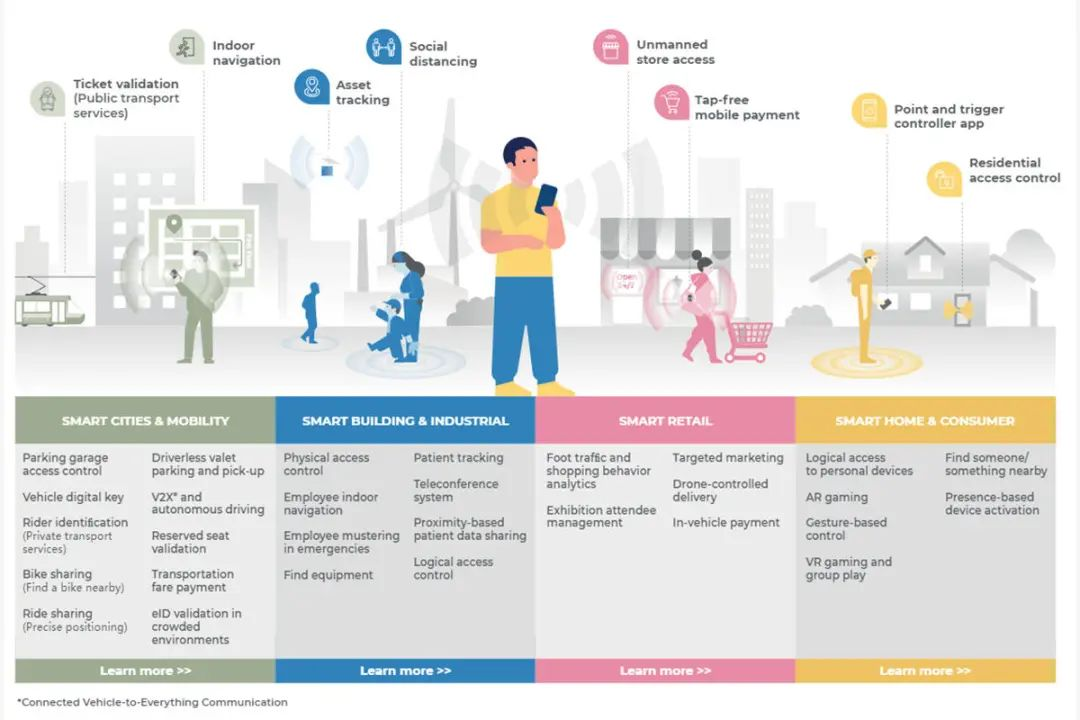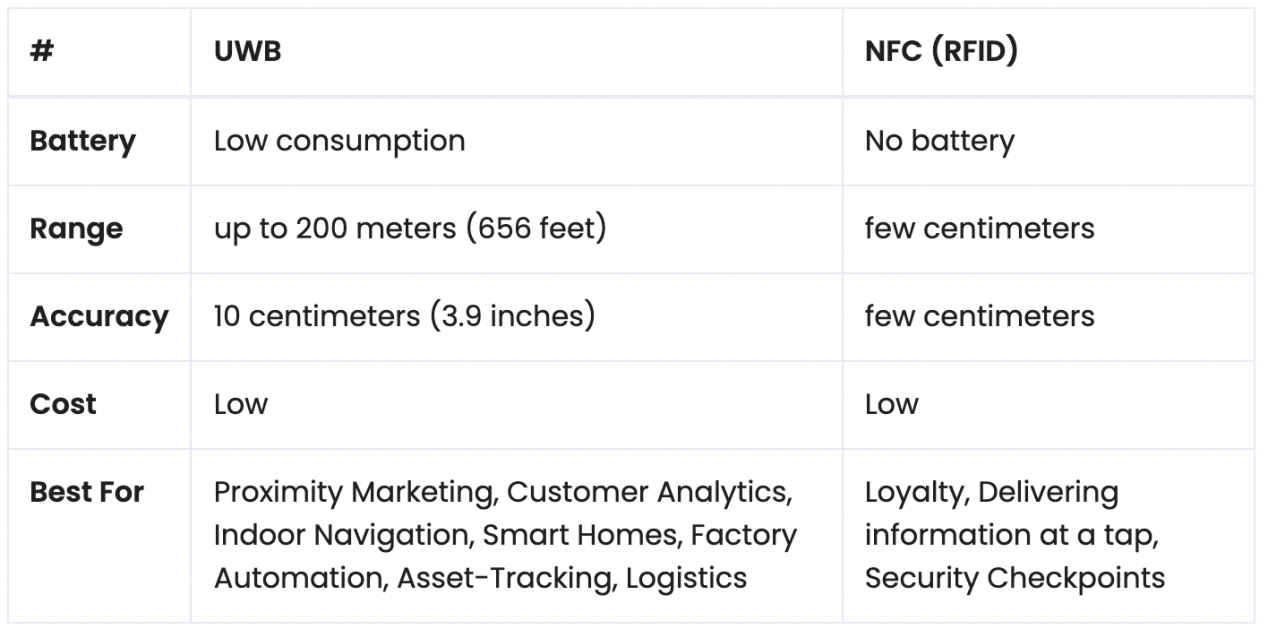What is UWB?
With the Apple AirTag released, UWB technology has gradually become well-known in the consumer electronics field, but its application in the industrial and commercial fields has been very mature. With the advantage of high positioning accuracy, fast short-distance communication transmission speed and quick response. It is an important component of the RTLS (Real Time Location Systems).
UWB (Ultra Wide Band) is a wireless communication technology that uses a frequency bandwidth above 1 GHz. It does not use the sinusoidal in the traditional communication system, but uses nanosecond non-sine wave narrow pulses to transmit data. Therefore, It occupies a large spectrum. Although wireless communication is used, its data transmission rate can reach hundreds of megabits per second.
UWB technology has the advantages of low system complexity, low transmit signal power spectrum density, insensitive to channel fading, low interception capability, high positioning accuracy, and strong penetration capability. It is especially suitable for high-speed wireless access in dense multipath indoor places.

FiRa Alliance shows more detail how does UWB technology impact on our lives in the future, including digital car keys, identity recognition, indoor navigation, offline shopping behavior analysis, exhibition data analysis, wireless payment, VR games, gesture recognition etc.
UWB vs. NFC
NFC is a relatively inexpensive RFID technology that operates in the 13.56MHz band and is becoming much more popular due to its low cost and size. NFC has a range of just 4 centimeters (less than 2 inches) therefore it can only be used in certain scenarios and establishing a precise location is not of them.
Passive NFC tags do not require any battery and are often incorporated into key fobs, payment cards or devices. One of the most popular use cases for NFC is to use it for contactless payments with a smartphone. An NFC tag that is created in a smartphone is then read by NFC reader in POS to establish a secure connection and pay for a product.

It is foreseeable that in the future, more companies and products will adopt UWB technology, not only for small objects such as smart phones, wearable devices, and smart homes, but indoor spaces also require a variety of location-based UWB infrastructure. It is expected that between 2022-2024, with the completion of the IEEE 802.15 4z standard, UWB sensors and actuators will be able to combine into a wireless network, which will be more actively used in mass market and enterprise solutions for indoor positioning and short-distance Communication adds a new dimension.
*The showing pictures for your reference ONLY.
All related to intellectual property rights of trademark belong to trade mark companies.
X Request a Quote

Copyright © Shenzhen RFID Connect Tech Co., Ltd. All Rights Reserved |
Sitemap
|
XML
|
Privacy Policy